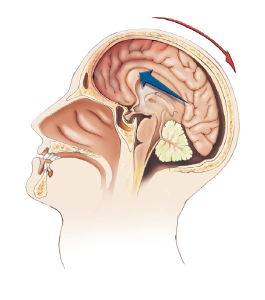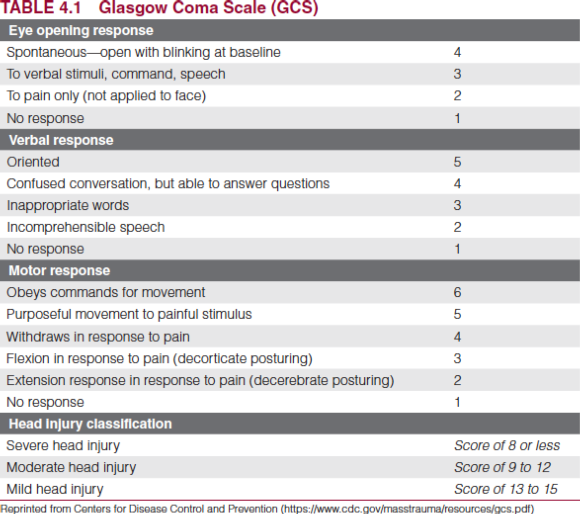Understanding concussion and head injury
This is an excerpt from Sports Injuries Guidebook-2nd Edition by Robert S Gotlin.
By Josh Krassen, DO
Concussion

Common Causes
An impact to the head, neck, or elsewhere to the body causing an acceleration-deceleration force to the head may result in a concussion (note that a cervical spine injury should also be suspected with such an injury; see chapter 5).
Identification and Prevention
A concussion is a traumatically induced alteration in mental status, such as confusion or amnesia, that may or may not involve a loss of consciousness (Kelly et al. 1991). It is based on functional, not structural, pathology, because imaging is often normal and not diagnostic of injury. There are 1.6 to 3.8 million sports and recreational concussions per year, and 135,000 are seen in the emergency room (Langlois JA et al. 2006). This injury most commonly occurs in American football during tackling or blocking but also occurs in other sports, such as in soccer when a player heads the ball or in ice hockey (more prevalent in women). There is good evidence that helmet use in skiing and snowboarding reduces head injuries. Limiting body checking in youth ice hockey and contact in youth football has also been shown to reduce head injuries. Teaching proper tackling techniques in football and avoidance of heading duels in soccer helps to reduce the risk of concussions. Evidence on use of mouth guards is inconsistent. Athletes with a history of previous concussions are more likely to have recurrent concussions (Guskiewicz et al. 2003).
It is important to have standard policies and protocols in place for education of players, referees, coaching staff, and parents of youth to help identify and understand the signs and symptoms of concussions. Everyone should have an understanding of its clinical features, assessment techniques, and principles for safe return to play. Concussions may involve clinical symptoms, physical signs, cognitive impairment, neurobehavioral features, and sleep-wake disturbances. Athletes can present with headaches, feelings of fogginess and drowsiness, forgetfulness, or irritability, or be emotionally unstable. Gait unsteadiness and slow reaction times are often noted. If any of these symptoms are observed, the athlete should be safely removed from practice or play.

Summary of Concussion Recommendations
- Removal from game with any sign or symptoms of concussion
- No return to play on day of injury
- Medical evaluation following injury, including neuropsychological testing and radiographs to rule out more serious intracranial pathology
- Adherence to stepwise return-to-play process:
- No activity until asymptomatic at rest and during exertion
- Light aerobic exercises
- Sport-specific exercises
- Noncontact drills
- Contact drills
- Game play
Two of the most important factors in determining next steps are the athlete's age and concussion history. Children have more prolonged and diffuse cerebral swelling and are at an increased risk for a second head injury (Pickles 1950). It is important to note that the speed of recovery is the same for all age groups, thus negating the theory that “kids heal faster.” Knowing whether the athlete has a history of concussions at the time of a new injury is important. Cumulative neuropsychological and subtle neurocognitive deficits can be seen after multiple concussions. After three or more concussions, athletes become more vulnerable to subsequent injuries (Collins et al. 2002) and therefore it is recommended that they retire from contact sports.
Overall there is a strong need for clear and practical guidelines to determine recovery and safe return to play for athletes with a sport-related concussion. One must remember that the science of concussion is incomplete, and thus management and return-to-play decisions should still be based on clinical judgment on an individualized basis.
More Excerpts From Sports Injuries Guidebook-2nd EditionSHOP

Get the latest insights with regular newsletters, plus periodic product information and special insider offers.
JOIN NOW


